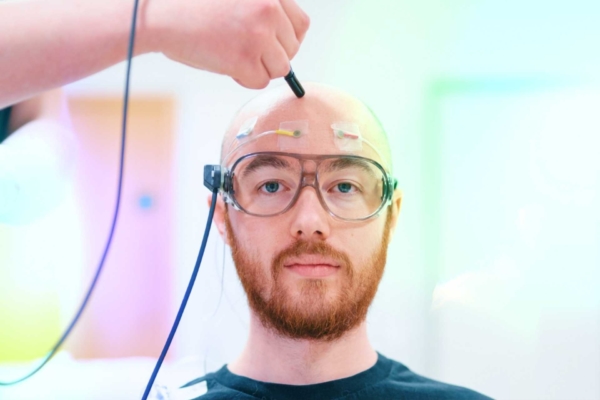
For investors in the psychedelics business, the year 2021 may have felt like a bad trip.
For the most part, publicly traded companies in the psychedelic medicines field have seen their market caps drop drastically. For example, in 2021 MindMed (Nasdaq: MNMD) is down 50%, atai Life Sciences (Nasdaq: atai) tumbled 61.7%, and the Horizons Psychedelic Stock Index ETF (NEO: PSYK) crashed 56%. (To understand some of the reasons behind the pull back, read my article Why Psychedelic Stocks Have Crashed.)
But despite this pullback in market value, when taking stock of the psychedelics industry, 2021 was nevertheless a pivotal year for the field. In fact, we saw the development of 3 key story-lines:
- The expansion of the public markets
- Increased funding to the industry
- Successful clinical trials
In this article, I will discuss each topic and explain its significance, with the goal of understanding the state of the industry and what to expect in 2022.
The Expansion of the Public Markets
When 2021 began, the era of publicly traded psychedelics medicines companies was just beginning. At the start of January, there were only a handful of psychedelics companies on any exchange, with MindMed and Compass Pathways being the most prominent.
However, throughout the year we saw dozens of IPOs, bringing the total number of public psychedelics companies to around 50. Some of the more exciting IPOs included: Cybin Inc. (NYSE: CYBN), Field Trip Health (Nasdaq: FTRP), atai Life Sciences (Nasdaq: ATAI), and Small Pharma (OTC: DMTTF).
This added competition brought more resources to the industry, and ultimately ensured its survival. It also broadened the scope of treatments being researched, and the total number of scientists working with psychedelics.
On the negative side, however, it likely contributed to weakening stock prices of many companies, as the total amount of resources dedicated to investing in psychedelics is divided between evermore companies.
Increased Funding
It is no secret that clinical trials are expensive. Completing phases 1 through 3 can cost tens of millions of dollars, even if everything goes right. Including the costs of failed clinical trials, one study found that the cost to bring each successful new drug to market is $985 million. For this reason, if the psychedelic sector wants to survive, companies need to be able to raise hundreds of millions of dollars, minimum.
2021 met those requirements, and then some. In fact, in 2021 alone, it is estimated that the psychedelics sector raised more than $2 billion. This was led by atai Life Sciences, who raised more than $400 million. Compass Pathways and MindMed also raised large amounts throughout the year, with Compass closing quarter 3 with almost $300 million in the bank, and MindMed with close to $200 million.
This will of course secure the stability of these individual companies for years to come, even if their stock prices take a dive in the interim. But more importantly, it will ensure that the needed clinical and discovery work is being completed, and help attract some of the brightest scientific minds in the world to the industry.
Successful Clinical Trials
By far, the biggest story of 2021 was the completion of several major clinical trials. Ultimately, whether the psychedelic medicines industry is successful or not will rest on whether psychedelic medicines can effectively treat conditions such as PTSD and depression.
This is why the results of MAPS’ phase 3 clinical trial, treating PTSD with MDMA assisted psychotherapy, were so exciting. In this trial, 67% of patients improved so much they “no longer qualified for a diagnosis of PTSD,” and a further 21% saw their symptoms decrease by 50% or more.
Compass Pathways also completed a flagship phase 2b trial this year, treating treatment-resistant depression with psilocybin. The results of this trial were not as amazing, though they were still positive with 37% of participants showing a response 3 weeks after treatment. It is important to remember that the patients in this group were the hardest to treat, being treatment-resistant. This means that they had all attempted at least twice before to treat their depression, to no avail.
Another study using Compass Pathways’ Comp 360, this one an open-label investigator-initiated study, had much better results in treating regular Major Depressive Disorder. In that trial, 24 out of 30 participants saw their depressive symptoms decrease by 50% or more.
These trials further cement the thesis that psychedelics have the potential to treat mental health conditions, and despite the beating that psychedelic stocks took in 2021, give me hope for 2022.
What to Expect for 2022
In 2022, I expect an acceleration of all three of the above stories. There will likely be dozens of more companies going public, though I also expect a consolidation of the industry, with mergers and acquisitions keeping the total number of companies relatively stable. This will also draw more funding to the industry, which will drive more clinical trials.
Personally, I am looking forward to the commencement of another MAPS phase 3 clinical trial using MDMA to treat PTSD, Compass Pathways’ phase 3 trial for treatment-resistant depression, and a range of MindMed trials, including a phase 2b trial to treat generalized anxiety disorder.
Though whether the stock prices will react to the upcoming positive catalysts is anybody’s guess.
Full Disclosure: James Hallifax holds positions in MindMed, Compass Pathways, atai Life Sciences, and the Horizons Psychedelic Stock Index
The views of the author are for informational purposes only, and should not be construed as financial advice, but rather his own personal opinion. Furthermore, the views of the author are not necessarily representative of Psychedelic Spotlight. His views and opinions are his own.





